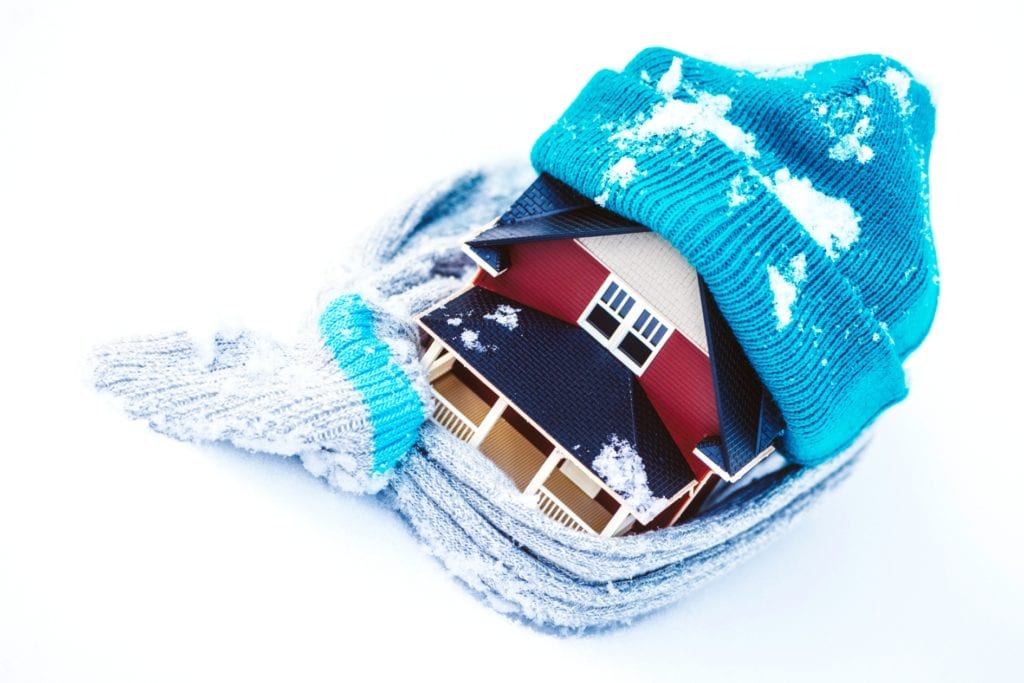
The winter landscape of the Cascades is breathtaking, but the extreme weather that comes with it can damage a home that hasn’t been prepared for the harsh cold. To get ready for the lower temps, check out these tips on how to effectively winterize vulnerable parts of your home.
Gutters and downspouts
Clear gutters and downspouts in fall to prevent icicles and ice dams from forming on and around your gutters. Check them again before winter comes and consider installing leaf guards to keep new leaves and debris from collecting. Once winter is underway, shovel excess snow off your roof and sprinkle ice melt in your gutters.
Deck and yard
Wood — whether installed on a deck or still attached to a tree — can be easily compromised by snow and extreme cold. If you have a wooden outdoor deck, apply sealer ahead of winter to minimize structural damage. Keep the trees that are close to your house properly trimmed. Branches can break under a heavy load of snow, so remove branches that hang over your house or car.
Doors and windows
Heat loss is a big issue during winter, and doors and windows are often the worst culprits. Check all doors and windows for air gaps and seal these by replacing the weatherstrips and recaulking where you find drafts. Consider investing in double-paned windows for greater energy efficiency. If this isn’t an option, install storm windows as an alternative and hang thick drapes or insulated blinds. Also, check for drafts around pipes, ducts, and wires that lead to the outside. Make sure to fit gaskets underneath electrical outlets, another stealthy source of heat loss.
Attic insulation
Pay special attention to your attic insulation as this may be due for replacement. Make sure that it’s still sufficient by measuring the temperature in the attic. 10 degrees above the temperature outside is ideal. If your attic registers lower temperatures, add more insulation until it is at least 10 inches thick.
Heating systems
The average lows in Chelan can reach the mid-20s, making optimally functioning heating crucial to weathering the winter in comfort. Schedule a test of your heating systems each fall to make sure they’re still working properly. Clean air filters and have furnaces, boilers, and chimneys serviced once a year to avoid sediment buildup. Hire a heating expert to clean your chimney; if you don’t plan on using it this season, install a chimney balloon to cut down even further on heat loss.
Plumbing
Pipes run the risk of freezing or bursting if they’re not properly insulated or drained. To prepare outdoor plumbing for the cold, remove and store hoses, cut off the water supply, insulate all outdoor faucets, and force all the water out of sprinkler systems. If a severe drop in temperatures is in the forecast, let indoor faucets trickle out water. You can also insulate hot water pipes to keep your boiler or water heater running more efficiently.
Supplies
Be prepared for the unexpected by stocking up on supplies for the season. Keep the following items in storage:
- snow shovels
- ice melt (magnesium chloride and calcium magnesium acetate [CMA] are eco-friendly alternatives to rock salt)
- extra food and drink
- flashlights
- batteries and back-up power sources
- first aid kit
Maintaining your home throughout the seasons protects its value, as well as its foundations. Learn what else you can do to increase your home’s value. Get in touch with Coldwell Banker Cascade Real Estate at 509.888.8887 or at info(at)cbcascade(dotted)com. We’re the experts you can trust for your Chelan, WA real estate needs.
